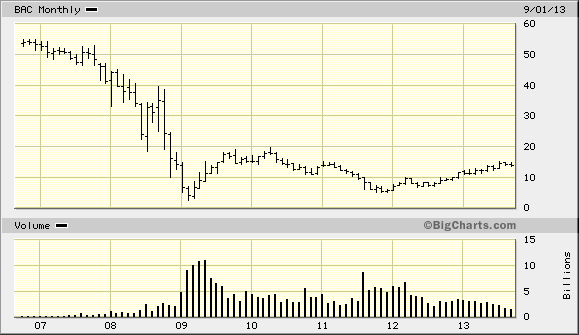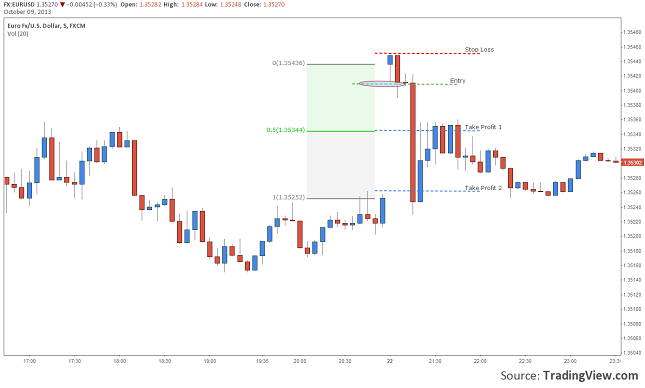By MoneyMorning.com.au
Investors are worried.
It’s all that talk about the US budget and the impending deadline to raise the US debt ceiling.
So it’s no surprise that investors have felt like selling stocks.
That means stock prices have dropped and the indices are lower. The Aussie S&P/ASX 200 index has fallen 150 points since hitting a five-year peak just two weeks ago. And it looks set to drop further today.
That’s about a 3% drop. Time to panic? Not on your life…
We don’t want to play down the seriousness of the budget and debt woes in the US. But we also don’t want you to overreact to it either.
These issues have pestered investors for the better part of six years – longer if you knew the stock and housing bubble was brewing before 2007.
We could be wrong, but our bet is the current volatility is just an extension of the uncertainty you’ve seen since late 2007.
To show you what we mean let’s look at the charts.
Is This the Beginning of a Bigger Fall?
Here’s a chart of the S&P/ASX 200. You can see on the right hand side how the market has dropped 150 points since the late September peak:

Source: Google Finance
However, we’ll point out one thing the chart doesn’t show. The market has just gone through a big dividend season. We know that for a fact because a whole bunch of the Australian Small-Cap Investigator stock picks have gone ex-dividend over the past few weeks.
Dividend periods can have a big impact on stock prices. You can see stock prices gain before the dividend, and then fall after shareholders have qualified for the dividend.
Odds are nervous investors have opted to ‘strip out’ the dividend by selling their stock holding after the stock goes ex-dividend. Remember that as a shareholder, in order to qualify for the dividend you don’t need to own the stock on the dividend pay date, you just need to own the stock on the ex-dividend date.
So there’s a chance that after hanging around to pick up the dividend, or even buying the stock just for the dividend, many investors have decided to take the advice of our retirement expert, Vern Gowdie, and sell their shares.
But this volatility isn’t new. We’ve seen it before. Look at the chart. It was only five months ago that the main Aussie index began a slide that would see it fall 10% in a matter of weeks.
Could stocks fall further? Sure. There’s no guarantee they won’t. What you’ve got to ask yourself is whether this is the opportunity to sell before the real plunge happens, or whether this could be the last best buying opportunity you’ll get this year.
Stocks Will Pop, but They Could Fall First
As we say, the volatility isn’t new. And quite frankly, if you can’t cope with that then you probably should take Vern’s advice and park your cash on the sidelines until either the volatility disappears or share prices are much lower.
But our view is the volatility won’t disappear. For a start, stocks are always volatile, even in relatively calm economic conditions. But when you add in worries about budgets and debt ceilings, well, that just ramps up the volatility even further.
And if you’re hoping for an immediate pop in share prices after the US President and Congress ink a deal, you may be disappointed. As the following chart shows, the last time the debt ceiling worried the markets so much in 2011, stocks fell after the President and Congress agreed to lift it (the arrow marks the spot):

Source: Google Finance
Of course, other things were happening around the same time, so we can’t pin every market rise and fall on the debt ceiling drama. Europe’s debt woes with Portugal, Greece, Spain, Italy and Ireland were at their peak around then too.
But over the longer term (the past two years) the 2011 debt ceiling impasse proved to be little more than a blip. Since US stocks bottomed in 2011 the S&P 500 index has gained 47%.
And since the start of this year the US index has gained 18%, which is almost double the return of the Australian market’s 10.2% gain.
That’s the key point. As we frequently remind you, even in a non-volatile market stocks don’t rise or fall in a straight line.
A Dangerous Game as Interest Rates Surge
We admit that we may be playing a dangerous game.
Even before the talk started to heat up about the US budget and debt ceiling, we had made it clear that our target for Aussie stocks was for the index to reach 7,000 points in 2015…and we stick by that.
But that could come undone if the US President and Congress do what we consider highly unlikely (in fact we’ll say right now there’s 0% chance of it happening). That is to allow the federal government to default on debt repayments.
That said, not everyone agrees with us. Bond investors are pricing in a possibility of default, albeit a small possibility. The US Treasury auctioned one-month treasury bills at a rate of 0.35%. According to Bloomberg News that’s the highest rate since November 2008.
Just to put that rate in comparison, the Treasury auctioned one-month treasury bills in August at a rate of 0.055%. That’s a big difference. So you can see why the market is reacting this way. By the same token we’ve seen rising interest rates spook the market before…only for stocks to shake off the concerns and rally higher (May to June this year).
So while it’s a dangerous game, as a speculator we’re prepared to play it. If we’re right and the politicians agree to pass the budget and raise the debt ceiling we expect to see stocks quickly recover and begin a long rally that will last through at least 2015.
If you agree with that view we can assure you there will be plenty of good buying opportunities today. If you think it’s more likely the US government will default on its debt then you’ll probably want to follow Vern’s advice and start ditching stocks now, while you can do so at a fair price.
Cheers,
Kris+
Join Money Morning on Google+
Special Report: UNAVOIDABLE: Australia’s First Recession in 22 Years










